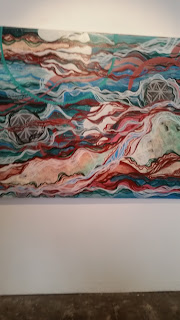Unfortunately, I have not seen any of this artist’s work in
person. But, I wanted to share her work, because she’s a working artist who I
greatly admire. And, not only do I hope to see her work in person one day,
there are several pieces I’d love to own.
Maria Rubinke is an
artist working out of Copenhagen, Denmark. She went to the Royal Danish Academy
of Fine Arts, and the Schools of Architecture, Design and Conservation. She
graduated in 2008, and has had a number of exhibitions.
Rubinke works in ceramics. She makes classic porcelain doll
figurines, but turns that image on its head. The figures are pure white, and
glossy. And, contrasts so sharply with the disturbing imagery she thrusts upon
them.
This one is titled “Cinderella.”
.
This one is “Blind Faith.”
Rubinke has done a few pieces like this, with a figure
tearing her hair out so vigorously that she splits her head open. Perfect
timing to show how I feel during finals.
But, this figure is my absolute favorite. If I could buy it,
I would. Many of her pieces seem to display these figures tearing themselves
apart in some way. And, those are the pieces I respond to the most. Take this piece, for instance. Here is a
picture perfect ballerina. To me, this piece seems to be about this seemingly
perfect petite little dancer taking a look at herself. But, she isn’t looking
in a mirror, she is looking inward. And, it’s a very violent look at herself.
She’s ripped out her eyes, and is forcing herself to look at her (now) bloodied
and eyeless form. The picture she gets of herself is disturbing, but it’s the
fault of HOW she is looking at herself. At least, that is how I see this piece.
How about you? What are your thoughts?








































